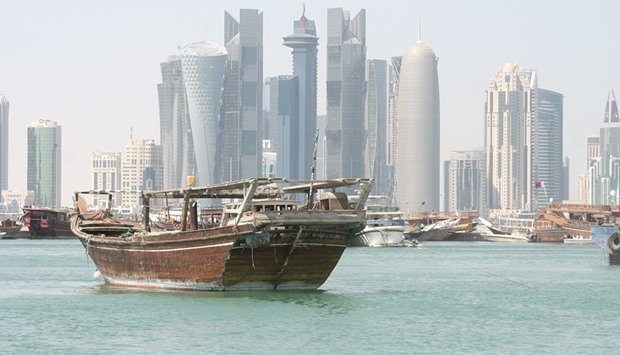Happy New Year and welcome to 2016! Before we forget about 2015, it’s worth mentioning how warm it was. We didn’t really notice much of a change in Qatar, but globally the temperatures were higher than ever. Many parts of the world saw the temperatures a few fractions of a degree warmer than average, but in some places the weather went positively bonkers: winter seemed to forget about Europe and eastern parts of the US.
At this time of year, people in many parts of Europe would expect to be wearing their warmest clothes and traipsing through thick snow to get to work. If they have a spare weekend, they may take a trip to the slopes to enjoy a spot of skiing. Except at the end of 2015, it felt more like spring.
Many places saw surprisingly mild weather, with a number of locations reporting their highest ever December temperatures. The capitals of Sweden, Finland and Latvia all set new December records, with temperatures of 13.2C, 10.8C and 11.8C respectively. In many locations, however, it wasn’t one particular day that was hot, but whole weeks that were far warmer than usual. When the average temperatures for the whole month are calculated, it is expected that there will be reams of new records.
Even Moscow, which would expect to be in the grip of a deep freeze with an average daytime high of -3.5C, was snow free. This didn’t only confuse the locals, but also nature, with snowdrops in full bloom and buds appearing on the rhododendrons. Now the deep freeze has finally arrived, it’s worried that the sudden change in weather could kill the plants.
The warmth was welcomed by some people in Europe, who tire of the endless winter snow, but the skiers were certainly not too impressed. In many of the ski resorts the only snow available was artificial snow on the runs. The rest of the mountains were still bright green.
The weather was similarly odd over the other side of the Atlantic; the east coast of North America was also experiencing a winter heatwave. A number of cities recorded record high temperatures for December, including Albany in New York which reached 22C (72F), and Burlington in Vermont, which climbed to 20C (68F). Albany’s December average is 2C, and Burlington’s is 0.7C.
New York City’s weather was equally balmy. I’ve been to New York in December with a group of friends and it was bitterly cold. To this day, my friend swears he got frostbite on his legs through his jeans. While I don’t entirely believe him, it does give you an idea of how cold it was. In 2015, however, the city climbed to 22C (72F), and you certainly wouldn’t get frostbite in that weather! Joggers were spotted around the city in shorts and t-shirts. It certainly wasn’t feeling like winter.
Just like Europe, it’s wasn’t just the individual high temperatures which were surprising in North America, but the length of time that the warmth has lasted. New York was so mild that the average temperature for December was over 7C above the norm, smashing the previous record set in 1871 by more than 4C.
If it were just the temperature that was affected, the mild weather would have simply been a talking point. The trouble is that unusual conditions in one part of the world often impacts the weather elsewhere.
In Europe, the mild weather brought a succession of storms to the northwest. The British Isles were repeatedly been lashed by storms, with one storm delivering the highest ever 24 hour rainfall total of 341.4mm (13.4 inches). Parts of Cumbria were flooded three times in less than three weeks.
Meanwhile in North America, the mild air in the east reacted violently with the cold air across the rest of the continent. This led to several rounds of severe weather, which battered the Mississippi Valley with torrential rain, gusty winds, damaging hail and even some tornadoes. One of these tornadoes was on the ground for over 160 kilometres (100 miles), which is horrifying given that they normally touch down for only about 5 kilometres (3 miles). No wonder the storms were so destructive.
The exceptional warmth can be partly blamed on El Nino, the slight warming of the surface waters of the Pacific Ocean. This is known to have a dramatic effect on the weather around the world, and the current El Nino is one of the strongest on record. The change in the ocean is believed to be having a large influence on the strange weather that is being seen in various parts of the globe.
El Nino is also known to pump extra heat into the atmosphere. This means that the global temperature is often higher during an El Nino event. However, ocean circulations cannot be used to explain away all the warmth of the year. 2015 was the warmest year on record, and the climate is still changing.

There wasn’t much of a change in Qatar, but globally the temperatures were higher than ever. Photo by Gregory Hawken Kramer


